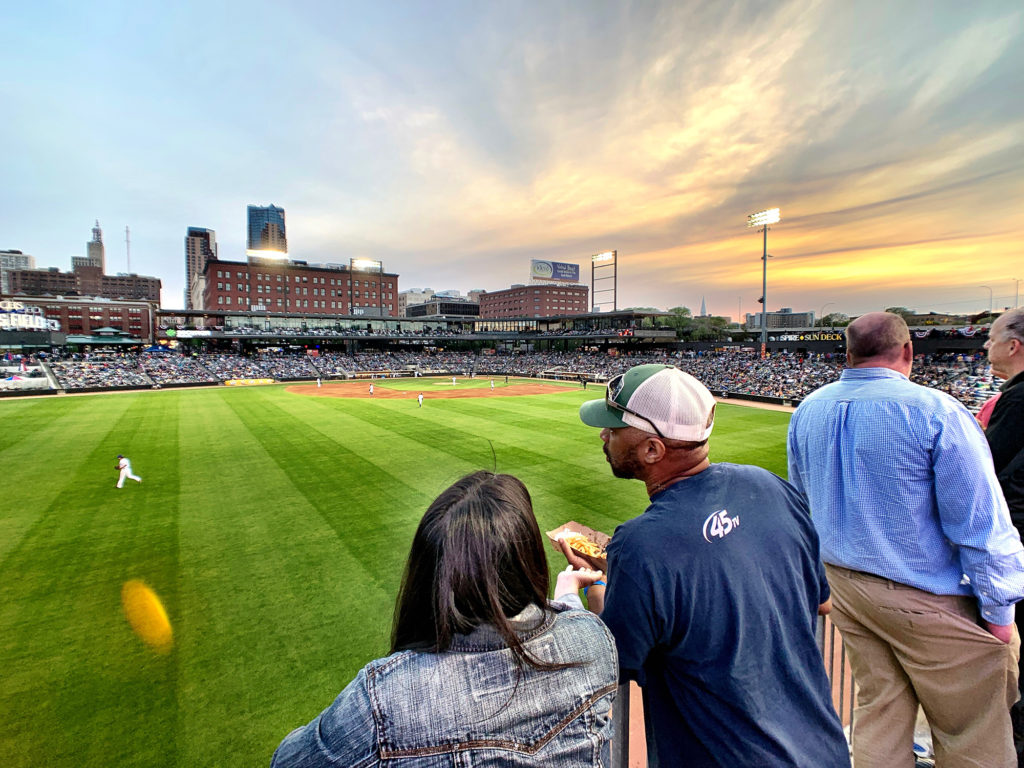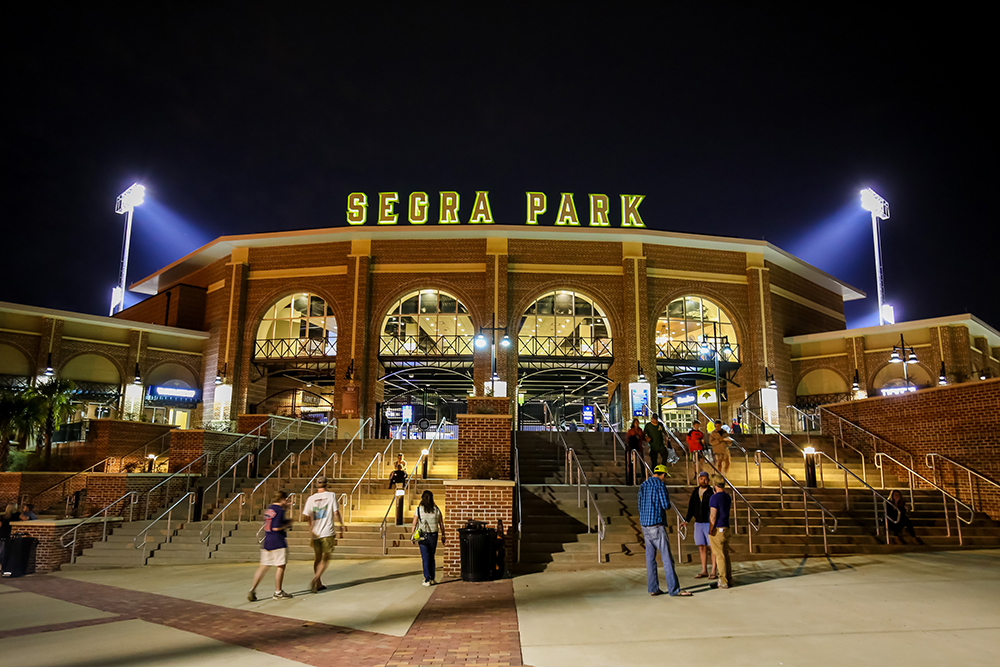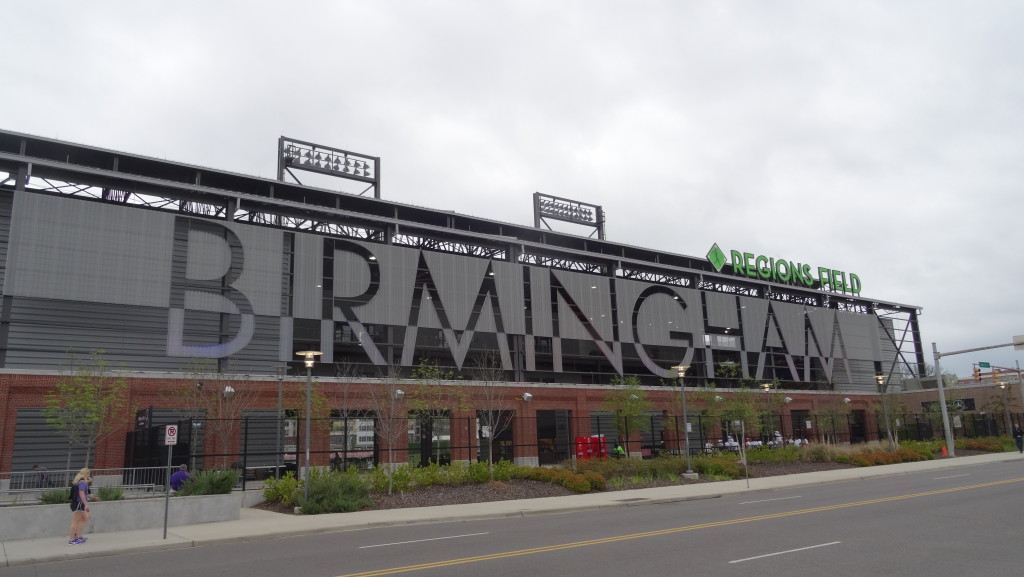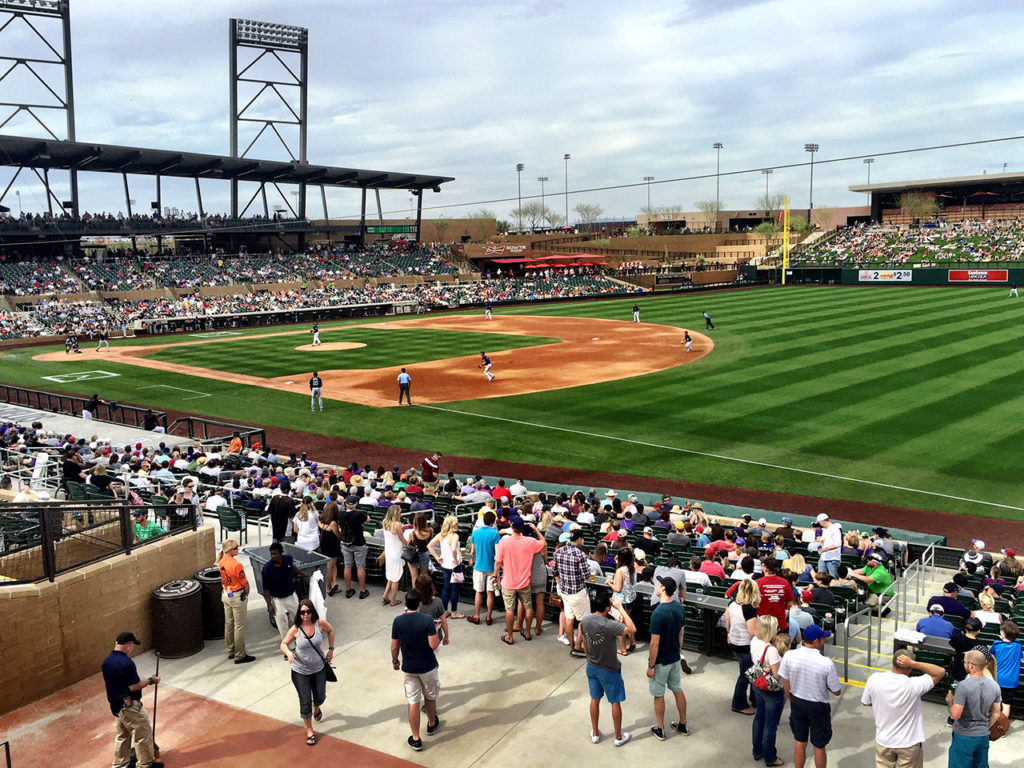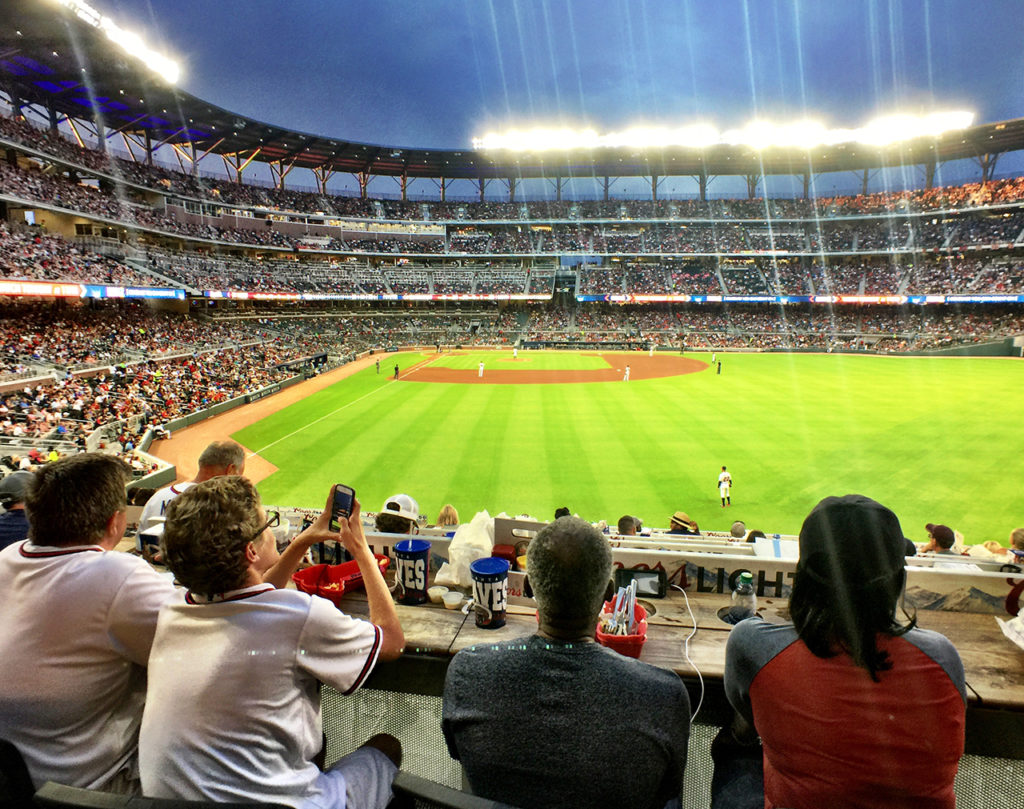With the 2019 season wrapping up and 2020 on the horizon, it’s a good time to look back on the last decade of new ballparks and their impact on the game. Here are our choices for the Ballparks of the Decade, listed by classification.
What guides our selections of the Ballparks of Decade? We begin with a design that encapsulates the state of the art in providing the very best game experience. We then consider a factor fans rarely see: how well the ballpark functions behind the scenes, including player spaces, concessions facilities and team offices. We also consider the impact a ballpark makes on a community, including an economic impact and a social impact. When they work (as in these cases), they are also centerpieces of larger economic-development efforts, priming the pump for additional investment in the area. Sports facilities had been pitched as economic-development tools for years, with mixed results at best.
With the emergence of Parkview Field, home of the Fort Wayne TinCaps (Low A; Midwest League), in 2009, Minor League Baseball had a successful economic model for new-ballpark development. Not only were the TinCaps a huge success, downtown Fort Wayne benefitted from plenty of investment in the ballpark area—investment that carried over into much of downtown. The TinCaps solved the economic-development model by tying specific investments to the ballpark area. Instead of waiting for area investments, the TinCaps made it part of their ballpark plan from the beginning. This strategy has played out with every one of these ballparks. Yes, these are all long-term plays, but so is any good investment.
But for a ballpark to truly succeed, there must be more than just an economic payoff. They need to also advance the art of lifting fan expectations, giving them a good reason to return for future games. At the end of the day, the best ballparks are today’s public squares, providing a sense of community in an era where community seems to be in short supply.
So, without further ado, here are our selections for the Ballparks of the Decade, 2010-2019.
INDEPENDENT BASEBALL: CHS FIELD, ST. PAUL SAINTS (2015)
After years of working on a new ballpark plan, the American Association’s St. Paul Saints finally found their forever home in a small, unusual lot in a downtown St. Paul area that would end up blossoming as an area bustling with new residents, new construction and restaurants/bars. What we wrote when CHS Field opened:
First, the ballpark has made a disproportionate impact on St. Paul’s economy: it is stunning to see how Lowertown has attracted major investments in housing and restaurants in the ballpark area. St. Paul has spent over 30 years trying to make Lowertown into a vibrant part of the city, and it’s fitting a key part of solving that puzzle was a ballpark built on top of the base of a former warehouse. Second, the ballpark experience kept the best of what was offered by the Saints at Midway Stadium — Mudonna! Seigo Masubuchi! a porcine mascot! tailgating! — and is totally integrated into Lowertown; the Saints brand remained intact (if not a little more refined) with the move. Plus, CHS Field is the only ballpark we know of with a working dog park on site, complete with fire hydrant. A little whimsy goes a long way.
Runner-up: Impact Field, Chicago Dogs (2018)
MILB LOW-A: SEGRA PARK, COLUMBIA FIREFLIES (2016)
The owner of the Fort Wayne TinCaps, Jason Freier, applied the same vision behind Parkview Field to a new Sally League ballpark built in an unusual location: as a centerpiece of a larger Columbia redevelopment, built on the location of a former state hospital. What we wrote when Segra Park opened:
Segra Park is the centerpiece of the planned redevelopment of the 181-acre site formerly housing the South Carolina state hospital for the mentally ill. It’s unusual to find such a large site available for development in a major city, and the Bull Street campus is a unique spot in Columbia history. The site was deeded to the city as a place to treat and house the mentally ill, and over the years it grew into a self-contained campus, surrounded by a growing. (Sad footnote in the history of mental health treatment: out of sight, out of mind.) The Babcock Building, the former hospital with the distinct cupola near the ballpark, opened in 1915 and was expanded several times through the years, serving as a highly visible symbol for the campus. Other buildings were constructed for specific purposes: a laundry, a bakery, an electrical plant, a mattress factory, a morgue and more.
The ballpark, as noted, is in the middle of this development, along with a new office building next door, with both located next to the former morgue, the Ensor Building. It’s highly symbolic that the ballpark is physically located in the middle of the development site (indeed, home plate is pretty close to the center of the property): as the first working building to open as part of the redevelopment, Segra Park will be the front door to the new look of the old hospital for most of the Columbia community. In the end, a variety of businesses will set up shop in the Bull Street development: the Babcock Building will be renovated into apartments, a tech village will be launched beyond right field, new residential will rise on both sides of the ballpark (including student housing), and national retailers will set up shop closer to busy Bull Street. As of now there are 10 projects and a half-billion dollars in development on tap for Bull Street.
Runner-up: SRP Park, Augusta GreenJackets (2018)
MILB HIGH-A: SEGRA STADIUM, FAYETTEVILLE WOODPECKERS (2019)
Another new-ballpark effort built with redevelopment in mind. Fayetteville officials sought development to anchor an underused part of downtown, working with investors on a plan to renovate a historical hotel and build a new hotel/office/parking structure alongside a new Carolina League ballpark. What we wrote when Segra Stadium opened:
The presence of nearby Fort Bragg — the world’s largest military installation, with over 50,000 active duty personnel on base — means that any endeavor like Minor League Baseball needs to have some sort of military component. But not be totally geared to the military: city officials see Segra Stadium as an investment in downtown Fayetteville’s future, a gateway to the city and part of a larger development initiative. It’s a marriage of the traditional with the modern.
Of course, the bigger the plans they longer they take to conclude, and right now Segra Stadium is a completed part of a larger uncompleted development. On Opening Day, the ballpark was ready to go and welcomed a sellout, enthusiastic crowd, even as the area around the ballpark is still a construction zone. Still, it was easy enough to see where both the team and the city are headed in terms of final product.
Runner-up: BB&T Ballpark, Winston-Salem Dash (2010).
MILB DOUBLE-A: REGIONS FIELD, BIRMINGHAM BARONS (2013)
Pro baseball returned to Birmingham proper with the opening of Regions Field, which helped revitalize an underused portion of the city. What we wrote upon our first visit to Regions Field:
First impressions can shape the ballpark experience, and the Birmingham Barons (Class AA; Southern League) seem to be keeping that in mind at Regions Field. Regardless of which entrance point they choose, fans are greeted by a stunning glimpse of the ballpark, setting the stage for what is ultimately one of the best game day experiences in Minor League Baseball.
With a red brick exterior mixed with steel, Regions Field has a very classic appearance that is meant to be viewed from multiple angles. The most eye-catching view is along 14th street, which is characterized by the signature BIRMINGHAM sign. Fans entering via Railroad Park will be greeted by a nicely designed brick facade that features the Barons’ logo, while the outfield entrance is highlighted by an open view of the playing surface.
Runner-up: Dunkin’ Donuts Park, Hartford Yard Goats (2017).
MILB TRIPLE-A: LAS VEGAS BALLPARK, LAS VEGAS AVIATORS (2019)
Howard Hughes Corp. embarked on the construction of Las Vegas Ballpark as a core attraction for its planned community, Summerlin. As part of the $150 million project, the Pacific Coast League Las Vegas Aviators benefitted from a new facility that seems to offer everything fans could want while offering plenty of amenities on the player side as well. What we wrote when Las Vegas Ballpark opened:
With a sleek grandstand design unlike any in baseball and plenty of attention paid to the small details, Las Vegas Ballpark, home of the Las Vegas Aviators (Class AAA; Pacific Coast League) stands out amidst the glitz of Sin City and becomes one of the most noteworthy MiLB ballparks.
The result of two decades of work by Aviators President/Chief Operating Officer Don Logan, Las Vegas Ballpark opened up last month in the Vegas suburb of Summerlin. The location is a good one: next to the Red Rock Casino complex (which, in fact, does take action on the Aviators), the Vegas Golden Knights (NHL) practice facility and a planned downtown district, Las Vegas Ballpark benefits from easy access from a nearby freeway, three major streets and plenty of side streets.
Runner-up: First Horizon Park, Nashville Sounds (2015).
SPRING TRAINING: SALT RIVER FIELDS AT TALKING STICK, ARIZONA DIAMONDBACKS/COLORADO ROCKIES (2011)
The last 15 years have seen a significant reimagining of the spring-training ballpark, both as a fan experience and as a player-development center. Gone is the model of a basic ballpark surrounded by training fields and rudimentary clubhouses. Instead, we have immersive experiences where fans are invited to stroll through playing fields to get a closer look at their favorite players, along with ballparks with plenty of amenities and shade. What we wrote when Salt River Fields at Talking Stick opened:
In a year that saw several noteworthy new ballparks, one stood out as a way that fundamentally rethought how a spring-training facility should work, while at the same time being the first Major League Baseball (MLB) ballpark to be awarded LEED Gold Certification. Salt River Fields at Talking Stick, the new spring home of the Arizona Diamondbacks and Colorado Rockies, is the clear choice for the 2011 Ballpark of the Year.
That new approach is apparent when fans first approach the complex. Instead of herding fans to one or two ballpark entrances, Salt River Fields at Talking Stick gives them four different and distinct entrances. The ballpark is placed at the center of the complex, allowing fans to meander through practice fields before the game. The berm is the largest in spring training, providing space for 4,000 fans to do what they really love at spring training: grab a cold one and sprawl out in the sun. Add to that a strong presence from the Salt River Pima-Maricopa Indian Community — the project hosts — and you have a unique spring-training environment.
Runner-up: Sloan Park, Chicago Cubs (2014).
MAJOR LEAGUE BASEBALL: SUNTRUST PARK (2017)
How influential is the home of the Atlanta Braves? Bring up any new MLB ballpark proposal and you’ll have a chorus of baseball officials saying that it should follow the model set by SunTrust Park and the accompanying Battery. What we wrote when SunTrust Park opened:
What makes SunTrust Park a template for future ballparks? Several factors stand out:
- SunTrust Park is the center of a larger development that includes office space, a hotel and an entertainment district—The Battery. The ballpark is purposely designed to be a year-round economic player in Cobb County, serving as a center of activity even when there are no MLB games on the docket.
- Community is everything at SunTrust Park, with social spaces available for both small and large groups. The ballpark is designed to appeal to every kind of baseball fan, ranging from hardcore Braves game-day devotees to casual fans wanting to hang out with friends on a sunny day.
- Southern hospitality is on full display at SunTrust Park, with a robust set of food and beverage offerings, including local specialties and even a microbrewery.
- A unique design that takes a challenging location and turns it into an intimate, fan-forward ballpark with plenty of unique vantages and viewpoints. The Braves’ history, ranging from the team’s roots in Boston to Henry Aaron’s historic accomplishments to more recent World Series wins, is highlighted in a unique Monument Garden. And there is truly a space to match the needs of every fan.
Runner-up: Target Field, Minnesota Twins (2010).
This article originally appeared in the Ballpark Digest newsletter. It’s free! Sign up here.


